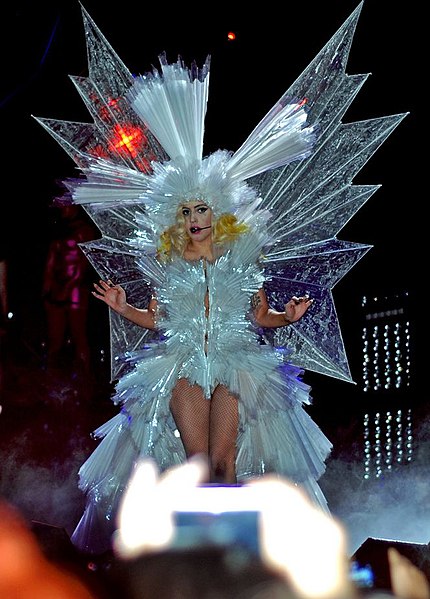When is the last time you have opened up a fashion magazine and saw anything other than tall, skinny women, that, according to society, are beautiful?
Although the diversity amongst the modeling industry is improving slowly over time, this hyper-skinny look has been defined as the ideal beauty standard in the American modeling industry and this has negative impacts.
Almost, all models don’t look the way they look in their photos, so why should we? The only thing the modeling industry has implemented in our society is negative body standards for young women.
If the modeling industry has so many negative impacts, then why keep it? It is time for the models to go.
Behind the Scenes
Behind the curtains, the modeling industry is a far cry from what most would expect. These models go through thousands of changes when they pose for pictures. Most of what you see is not real. Models have the benefit of makeup artists, hair stylists and designer clothing to help them look good. Makeup artists spend hours applying makeup to models’ faces and sometimes even their bodies before fashion shows.
Plastic surgeries are commonly performed on models to keep them looking young and to make sure they have the right proportions. There are thousands of models out there so they need to maintain the ‘perfect body’ or someone else will replace them.
Acne is something everyone goes through at some point. You can be lucky and not get it as bad, but it still happens to most everyone, including models.
Airbrushing in photographs is a common technique used to get rid of not just acne but lines, wrinkles and cellulite and sometimes slim the body. This is all done using computer technology. The term has often been applied to describe images of unrealistic female perfection.
Today, computer programs such as Photoshop allow for almost endless manipulation of images. In advertising, this means that the image you see may only remotely resemble the actual photograph. Some companies have come under fire for airbrushing the images of models and other celebrities into unrealistic portrayals of “perfect” women. 99.9% of models have their photographs edited in order to look ‘better.’
Blake Lively, a famous supermodel turned actress, says that, “It’s so important for young people not to compare themselves with what they see online…It’s our job as actors and/or models is to be in shape. We have access to gyms and trainers and healthy food. On top of that, 99.9 percent of the time the images are Photoshopped.”
Overall, the body and face you see in the photographs is most of the time fake. Realistically, no one looks that ‘perfect’.
Negative Effects on Society
Being considered ‘ugly’ is the result of a corrupt society rather than fact. There is no definition in the dictionary on what a ‘beautiful’ person looks like; it is all perspective. If that is true, then why do so many modeling industries push unrealistic standards on everyone, especially young women?
Social comparisons, where people compare themselves to others on social media or in real life, is almost inevitable when dealing with modeling photos. I personally have been at the mercy of models. When shopping for clothes and liking the way a certain item looks on another person (the model) only to realize that it looks terrible on me is not exactly self-reassuring. Many eating disorders arise from social comparisons.
This constant worrying about being thin enough, being liked, or, in general, being good enough, causes a breakdown of your self-image, and this breakdown paves the way for eating disorders. They come in many shapes and forms such as anorexia nervosa, bulimia nervosa, and binge eating disorder. Despite their varying symptoms, they all have a common root in social comparisons. While eating disorders may start off as unhealthy eating habits, they eventually become an obsession and destroy a person’s relationship with food.
Social comparisons have also been linked with depression. Social comparisons, particularly for women, can lead to feelings of not measuring up, which can lead to negative self-appraisals and depression.
Additionally, in a study involving social comparisons on social media, 90% of women compare themselves to other people while 60% of men admitted they compare themselves when they are using social media. Additionally, 50% of respondents said they experienced low self-esteem as a result of comparing themselves to others online.
Many pictures often depict very young and impossibly beautiful women. As women get older, they feel pressure to look younger, ignoring their natural beauty in order to achieve the impossible effort to retain a 20 year old body.
In another study, 74% of respondents said that seeing models posing for photos made them want to permanently change a part of their body through surgery. The modeling industry causes women to develop unrealistic beauty standards that no one — even models — can actually live up to.
Get Rid of Modeling
I think it is clear that models create negative self-esteem and problematic issues for our society. The self-hate caused from models is repulsive and vile.
So, why are they still here?
When I see models, I never think of the clothes that they are wearing, but instead of the person wearing the clothes. These photos never scream ‘buy these clothes,’ but they say ‘be more like these ‘beautiful’ women.’ I think it is clear to establish that it isn’t the models who are causing the problem, but the image that they are creating that gets passed on to young women and children. There is this awful standard that you have to be ‘pretty’ in order to have a social life.
Therefore, it may be time for the models to walk the catwalk, just keep on going, and never come back.










































